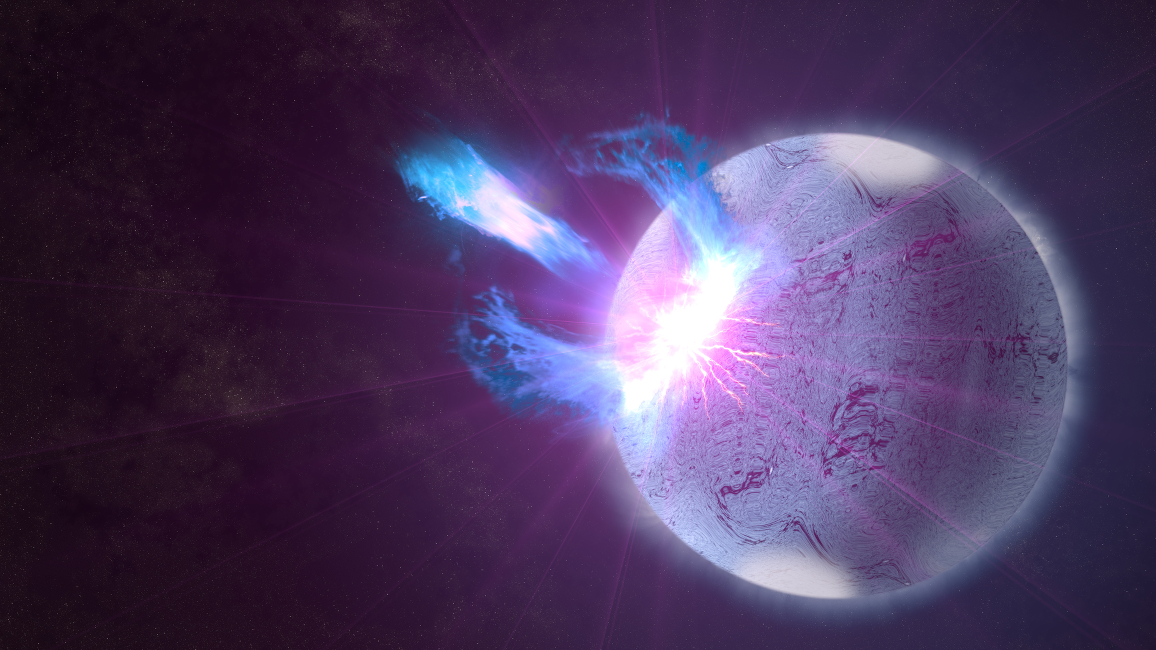
 Credit: NASA's Goddard Space Flight Center/S. Wiessinger; Fermi
Credit: NASA's Goddard Space Flight Center/S. Wiessinger; Fermi
Starquake
After a massive star runs out of thermonuclear fuel, its iron core collapses, releasing enough energy to blow the star apart. The tiny, collapsed core may become an object known as a neutron star, an object with the mass of the Sun compressed to the size of a city. Neutron stars are so dense that one teaspoonful of neutron star material would be more massive than the combined human population of earth. Most neutron stars rotate rapidly and also possess strong magnetic fields as well; in fact, some of these objects, known as magnetars, are the strongest magnets in the Universe. The image above shows an artist's rendering of the cracking of a magnetar's solid iron crust, similar to an earthquake on earth. Earthquakes release so much energy that these events can be detected around the globe. But starquakes on magnetars are so powerful that they generate bursts of high-energy radiation that can be detected across the galaxy. Earthquakes generate internal waves which provide evidence about the interior of the earth. Bursts from neutron stars also generate seismic waves on the neutron star, providing information about the incredibly dense interior of the star, where new forms of matter are believed to exist. Previously, such waves were only seen as pulsations in rare, giant magnetar bursts. Now, astronomers have developed a sensitive method to detect these vibrations in more frequent, less intense magnetar bursts. Using this method, they have successfully detected these vibrations in bursts of gamma-rays detected by the Fermi Gamma-ray Burst Monitor from a magnetar known as SGR J1550-5418.
Published: December 1, 2014
<
HEA Dictionary ● Archive
● Search HEAPOW
● Other Languages
● HEAPOW on Facebook
● Download all Images
● Education ● HEAD
>

Each week the HEASARC
brings you new, exciting and beautiful images from X-ray and Gamma ray
astronomy. Check back each week and be sure to check out the HEAPOW archive!
Page Author: Dr. Michael F. Corcoran
Last modified Tuesday, 27-Feb-2024 10:15:19 EST


